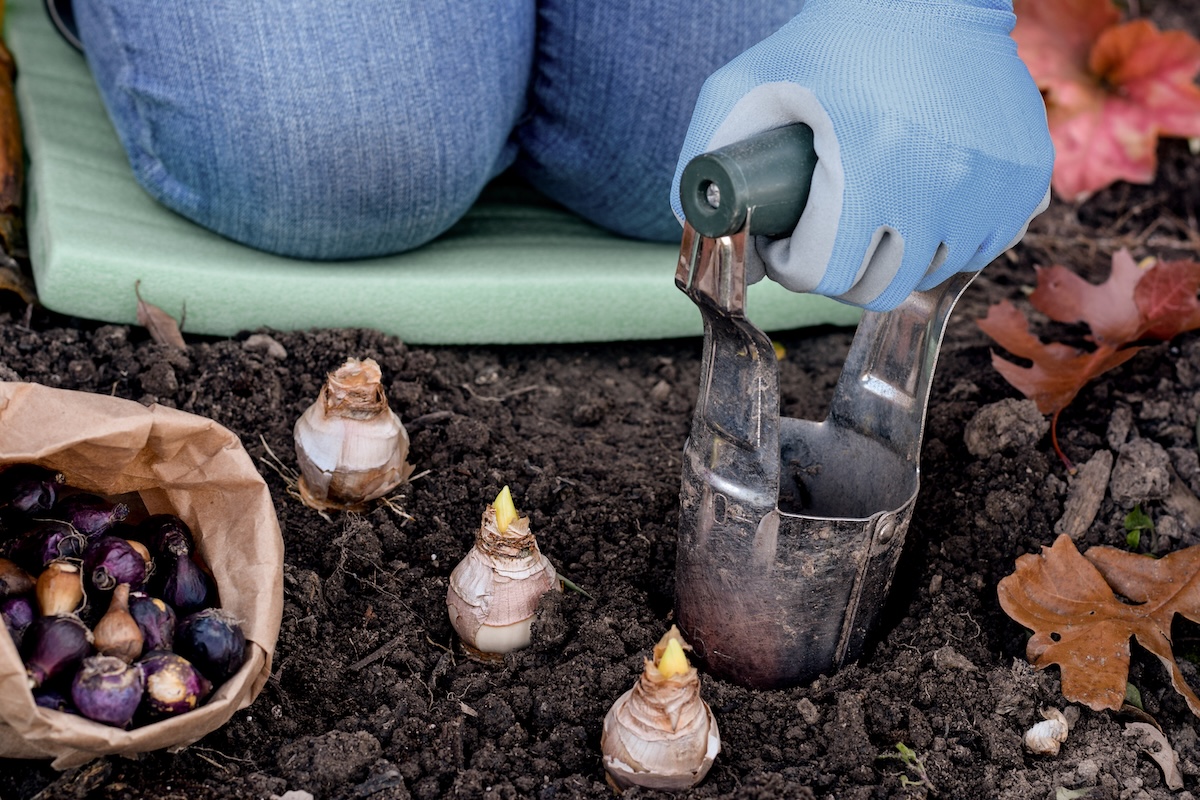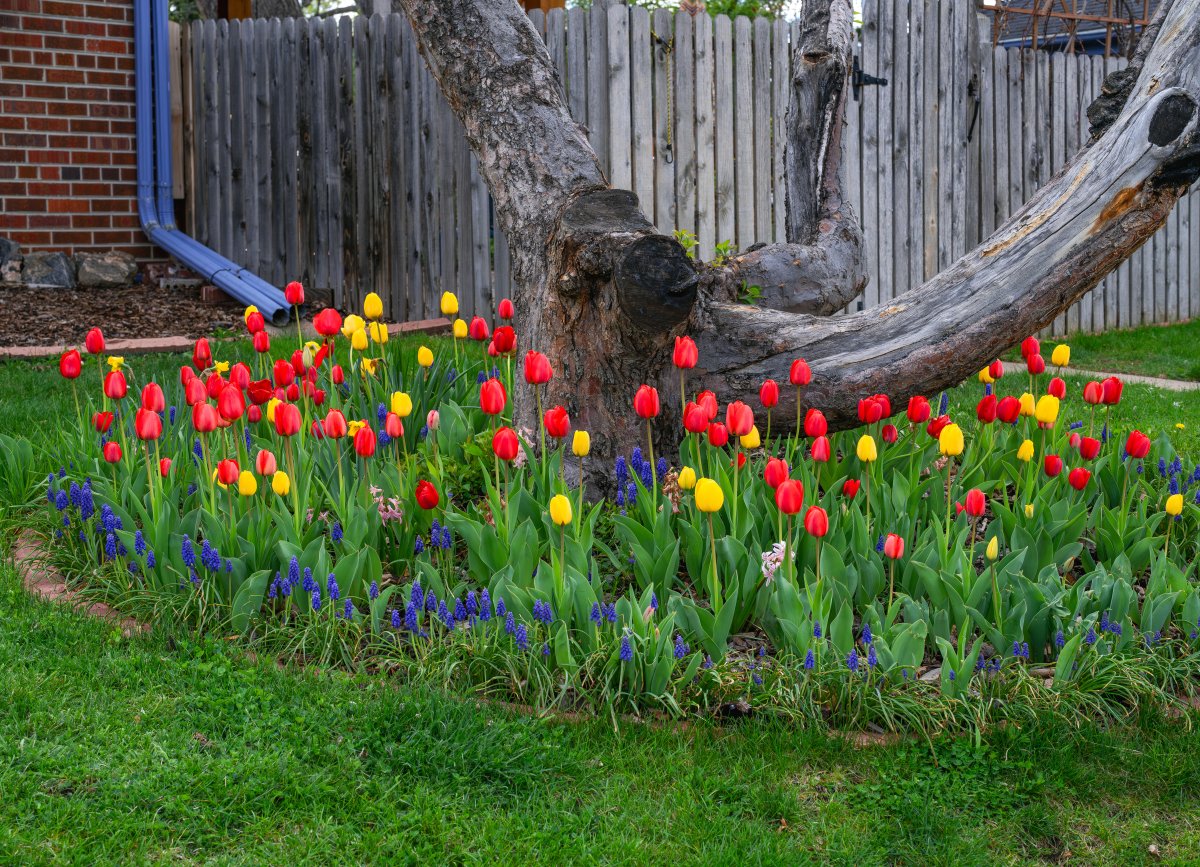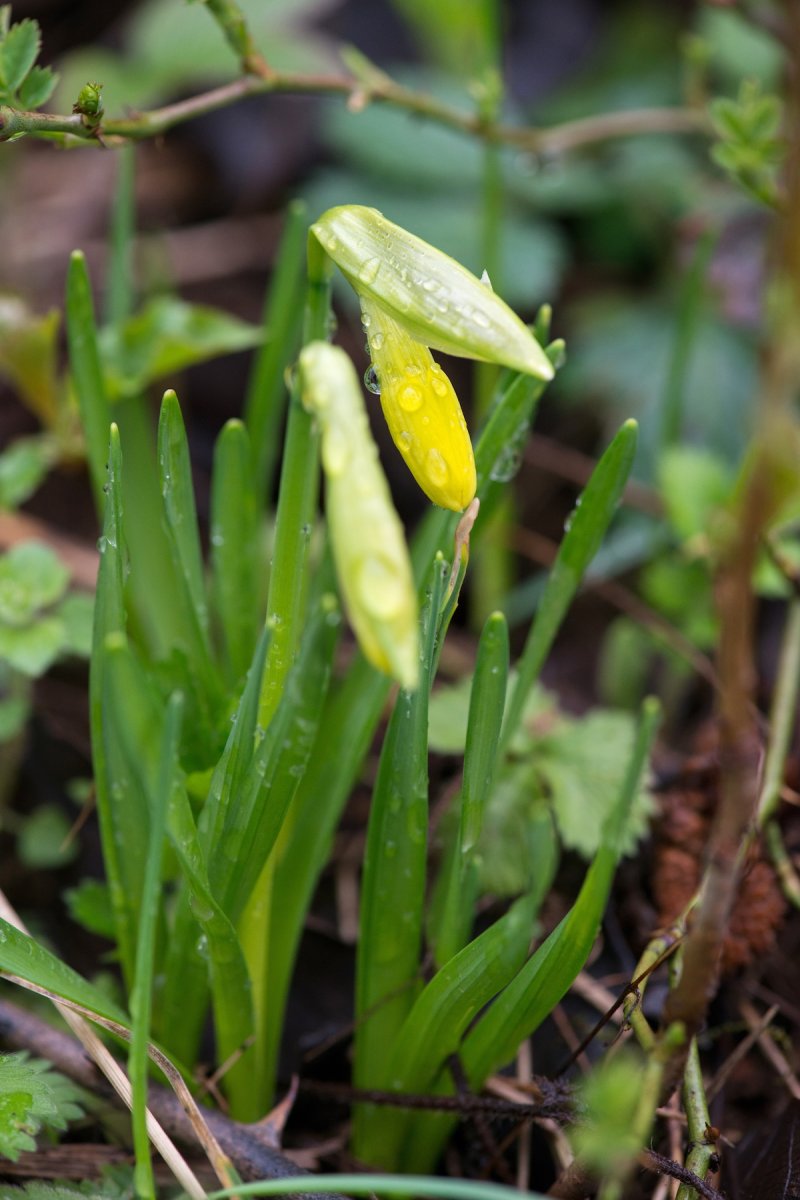

We may earn revenue from the products available on this page and participate in affiliate programs. Learn More ›
Fall is the season for planting bulbs that will bloom in the spring such as crocuses, daffodils, and tulips. And, unlike the professional gardeners employed by public parks, most of us don’t have the time or the manpower to dig up and replant flowering bulbs every year. So, ours will be staying in place—and taking up room.
Fortunately, most spring-flowering bulbs come up so quickly and die back so soon that they can tolerate less than ideal conditions. Therefore, I usually make my decisions about where to plant them—which is often outside established beds—based on the following considerations.
There isn’t enough room in my flower beds.
Since I always start more seedlings than I can possibly use, I need most of the space in my flower beds for annuals and perennials. Then there are the summer-flowering tubers, such as dahlias, which might still be blooming when it is time to plant spring-flowering bulbs.
Once when my mother set out daffodil bulbs for me, she wisely placed them on the banks above ditches where nobody ever bothered planting anything else. This worked so well that many of my other bulbs to plant in fall now are tucked away into nooks and crannies in the landscape.

Spring-flowering bulbs’ foliage looks unattractive when dying back.
The foliage of spring-flowering bulbs must be allowed to die back naturally to feed energy into the bulbs so they will bloom again the following year. But all those yellowing leaves don’t look appealing in flower beds. My uncle wisely planted his large Dutch crocuses (Crocus vernus) in his lawn and, I assume, put off mowing until they had died back.
To be on the safe side, I planted mine under our maple tree where the grass is so sparse that nobody ever mows there. They continue to multiply happily since they always bloom before the tree leafs out.
Some spring-flowering bulbs prefer dry conditions during summer.
When planting tulip bulbs, it’s important to remember that many hybrid types aren’t reliably perennial. So, even allowing their foliage to fade naturally isn’t always going to bring them back the following year. Their bulbs tend to split or rot in clay soil, especially if the soil stays moist.
Since perennial tulips reportedly return best if they experience dry conditions during summer, I once planted some on a slope near the pasture that drains well. Although even those tulips didn’t last forever, they seemed to last longer than they would have otherwise; we simply mowed around them until they died down.

I’m less likely to accidentally dig up bulbs outside flower beds.
When I see a desirable plant marked down at the local department store in midsummer, I look for an open space in my flower bed into which I can insert it. And I almost always forget that the reason for that empty space was spring flowers blooming there earlier.
Therefore, my enthusiastically wielded spade slices the then-dormant bulbs I had planted into small pieces that never will bloom again. Or, even if I only accidentally dig those bulbs up, I’ll have to replant them. That, of course, isn’t as likely to happen to bulbs that are sleeping peacefully beneath grass or trees.
I like the natural look of a free-flowering landscape.
Let’s face it. A landscape where nothing ever blooms except in the flower beds looks a bit boring—and artificial. But one where you have crocuses coloring the lawn, tulips tiptoeing down a grassy slope, and daffodils nodding at the roadside really does make spring appear to be “bursting out all over.” And the flowers, which look a little contrived and over-regimented in mass park plantings, appear to be a natural part of the landscape.
